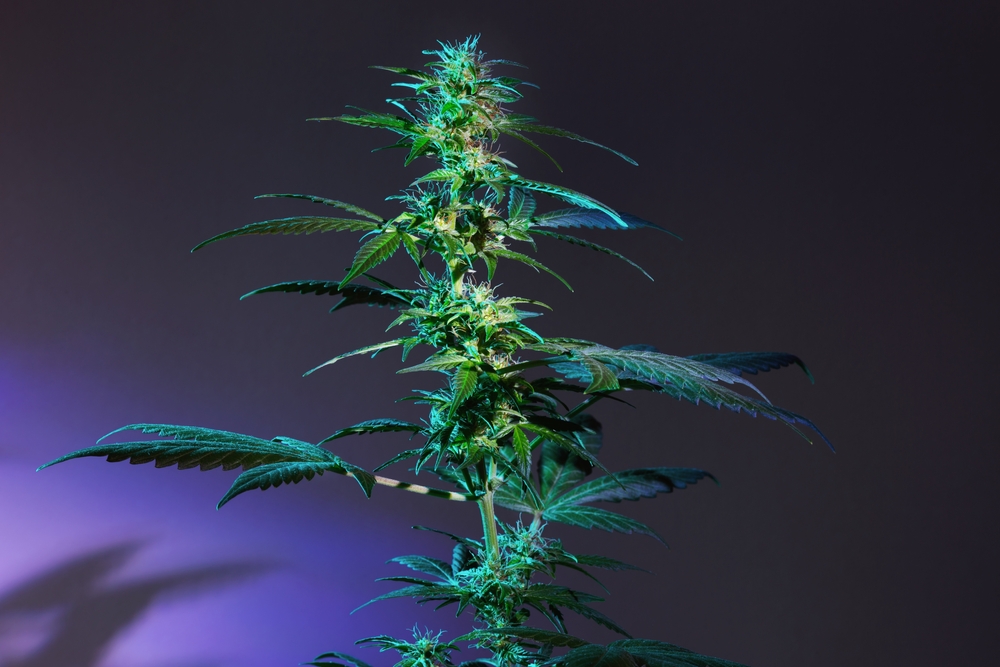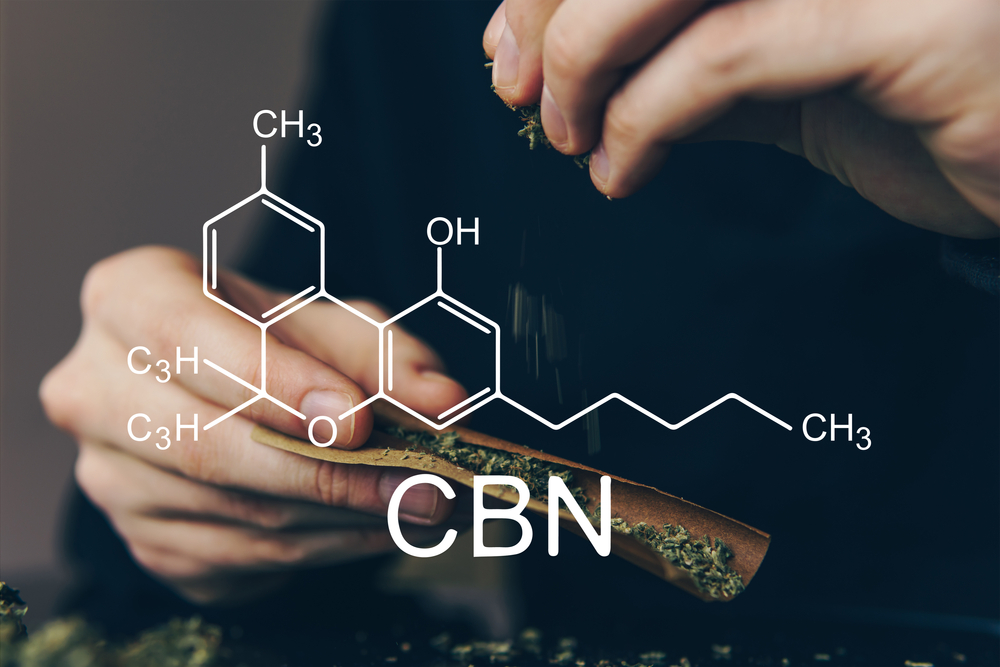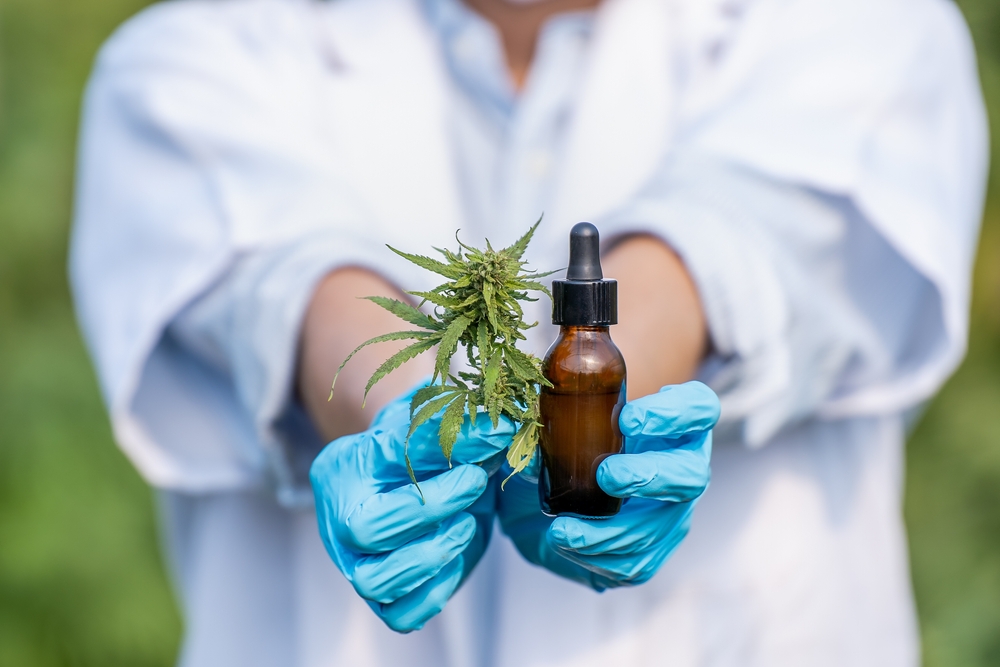Table of Contents
Introduction
CBN, short for cannabinol, is a naturally occurring cannabinoid found in cannabis plants. It is one of the many compounds belonging to the diverse class of chemicals known as cannabinoids. Cannabinoids interact with the endocannabinoid system (ECS) in the human body, which plays a crucial role in regulating various physiological processes. You can find the effects of cbd on the endocannabinoid system by checking out this link.
CBN is derived from the degradation of tetrahydrocannabinol (THC), the well-known psychoactive compound found in cannabis. As THC ages or undergoes exposure to heat or light, it gradually converts into CBN. This conversion process is responsible for the relatively low levels of CBN typically found in fresh cannabis plants.
While CBN is structurally similar to THC, it does not possess the same intoxicating effects. Instead, it is often associated with potential sedative and relaxing properties. As a result, CBN has gained interest for its potential therapeutic applications, particularly in the areas of pain management and sleep disorders.
In recent years, research on CBN has expanded, shedding light on its pharmacological properties, medical potential, and safety profile. This introduction sets the stage for exploring the chemical properties, natural occurrences, pharmacology, and market aspects of CBN.

Definition and Background of CBN:
CBN, or cannabinol, is a naturally occurring cannabinoid in cannabis plants. It is one of the numerous chemical compounds these plants produce, collectively known as cannabinoids. CBN is derived from the degradation of tetrahydrocannabinol (THC), the primary psychoactive compound in cannabis.
When cannabis ages or undergoes exposure to heat or light, THC gradually breaks down and converts into CBN. This conversion process is responsible for the relatively low levels of CBN typically found in fresh cannabis plants. Unlike THC, CBN is not known for its intoxicating effects. Instead, it is often associated with potential sedative and relaxing properties.
CBN has attracted attention in the scientific and medical communities due to its potential therapeutic applications. Researchers have been studying its interaction with the endocannabinoid system (ECS) in the human body and exploring its potential benefits in areas such as pain management and sleep disorders.
As the understanding of cannabinoids continues to evolve, CBN holds promise for further research and exploration, paving the way for potential advancements in cannabis-based medicine.
Natural Occurrence of CBN
CBN is a cannabinoid that is naturally present in the cannabis plant. It is derived from the degradation of tetrahydrocannabinol (THC), the primary psychoactive compound found in cannabis. As cannabis ages or undergoes prolonged exposure to heat or oxygen, THC molecules break down and gradually convert into CBN.
The natural occurrence of CBN in cannabis is relatively low compared to THC or cannabidiol (CBD). Freshly harvested cannabis flowers typically contain only trace amounts of CBN. However, as the plant material ages or is subjected to certain conditions, the concentration of CBN increases.
The conversion of THC to CBN is influenced by various factors, including exposure to light, heat, and oxygen. Over time, especially during improper storage or curing processes, THC oxidizes and degrades, leading to higher levels of CBN. This natural process is commonly referred to as the “oxidative pathway.”
Source and origin (e.g., cannabis plants)
CBN, or cannabinol, is a naturally occurring cannabinoid that is primarily sourced from cannabis plants. It is derived from the degradation of tetrahydrocannabinol (THC), the principal psychoactive compound in cannabis. As cannabis flowers and plant material age, or when exposed to certain environmental factors like heat and oxygen, THC undergoes a gradual conversion into CBN.
This process is often referred to as oxidation. While freshly harvested cannabis plants contain relatively low levels of CBN, their concentration increases over time as THC breaks down. The natural occurrence and transformation of cannabinoids in cannabis, including the formation of CBN, have been the subject of scientific research and exploration to better understand the chemistry and properties of these plant compounds.
Formation and degradation process from other cannabinoids (e.g., THC)
Formation of CBN:
-Initial cannabinoid: THC, the primary psychoactive compound in cannabis, is the initial cannabinoid present in the plant.
-Oxidation: Over time, THC molecules can undergo oxidation when exposed to environmental factors such as heat, light, and oxygen.
-Loss of double bond: During oxidation, THC loses a double bond from its molecular structure, leading to the formation of CBN.
-Conversion process: This conversion process occurs naturally as the cannabis plant material ages or undergoes improper storage conditions.

Degradation of THC to CBN:
-Exposure to heat and light: THC is susceptible to degradation when exposed to heat and light, which can accelerate the breakdown process.
-Oxidation: The exposure to oxygen triggers oxidative reactions in THC, leading to the formation of CBN.
-THC breakdown: Through oxidation, the molecular structure of THC is altered, resulting in the conversion of THC into CBN.
-Increased CBN concentration: As THC degrades and converts to CBN, the concentration of CBN gradually increases in the cannabis plant material.
It’s important to note that the specific mechanisms and rates of formation and degradation can vary based on various factors such as environmental conditions, storage methods, and the specific strain or variety of cannabis.
Factors influencing CBN levels in cannabis
Picture a cannabis plant, vibrant and full of cannabinoids, each with its own story to tell. Among them, there’s CBN, the mellow maestro of relaxation. But what determines the levels of this intriguing compound? Let’s explore the factors that influence CBN’s presence in cannabis.
Age is more than just a number: As the cannabis plant matures, its cannabinoid profile undergoes a captivating transformation. Freshly plucked buds boast low CBN levels, while the passage of time works its magic. Through the dance of degradation, cannabinoids like THC break down and gracefully evolve into CBN, adding a touch of tranquility to the mix.
Light plays a leading role: Imagine the cannabis plant basking in the golden rays of the sun. While sunlight nourishes its growth, it also orchestrates a delicate balance of chemical reactions. Exposure to intense light, especially ultraviolet rays, can accelerate the conversion of THC into CBN. So, think of light as both an artist and an alchemist, shaping the CBN destiny of the plant.
Heat adds a touch of transformation: When things heat up, so does the chemistry within cannabis. High temperatures, whether during drying, curing, or storage, can catalyze the conversion of cannabinoids. THC, the fiery hotshot, surrenders some of its potency to become CBN, embracing a calmer demeanor. So, the right blend of heat can be the secret ingredient in the CBN symphony.
Oxygen stirs the pot: Just as life-sustaining oxygen fuels our existence, it also fuels the CBN alchemy in cannabis. Exposure to air, especially when cannabis is improperly stored, allows oxygen molecules to mingle with THC. This interaction triggers a slow dance of oxidation, gradually turning THC into CBN. It’s like a breath of fresh air bringing forth relaxation.
Strain diversity plays a part: Not all cannabis strains are created equal when it comes to CBN. Some strains naturally possess higher levels of CBN precursor compounds, while others may have a predisposition for a slower transformation. It’s this genetic variation that adds an element of unpredictability to the CBN symphony, making each strain’s composition a unique masterpiece.
As we explore the intricate interplay of age, light, heat, oxygen, and genetic factors, we unravel the mystery behind CBN’s allure in cannabis. So, the next time you encounter CBN’s soothing embrace, remember the symphony of influences that brought it to fruition – a story woven within the cannabis plant itself.
Pharmacology and Medical Potential
CBN (cannabinol) has garnered attention within the field of pharmacology due to its potential medical applications. As a non-psychoactive cannabinoid derived from the degradation of THC, CBN interacts with the endocannabinoid system (ECS), primarily targeting CB1 receptors. Its affinity for CB1 receptors is lower compared to THC, resulting in minimal psychoactivity. Instead, CBN exhibits a range of pharmacological properties that contribute to its potential therapeutic benefits.
CBN has shown promise as an analgesic, displaying potential pain-relieving effects. Studies indicate that CBN activates the vanilloid receptor TRPV1, leading to the modulation of pain perception. CBN exhibits anti-inflammatory properties, which may further contribute to its analgesic potential.
Furthermore, CBN has been investigated for its potential as a sleep aid. Research suggests that CBN may enhance sleep duration and quality by prolonging the sleep-inducing effects of THC. CBN’s sedative properties may be attributed to its interaction with GABAergic neurotransmission, promoting relaxation and sleep.
CBN has also exhibited potential as an appetite stimulant. Animal studies have demonstrated an increase in food intake following CBN administration, suggesting its utility in conditions where appetite stimulation is desired, such as certain medical treatments or disorders associated with appetite loss.
In addition, CBN has shown potential antimicrobial properties, specifically against antibiotic-resistant bacteria such as MRSA. It may exert antibacterial effects by targeting the bacterial cell membrane, disrupting its integrity.
While the medical potential of CBN is promising, further research is necessary to elucidate its mechanisms of action, optimize dosage, and explore its full therapeutic scope. Nonetheless, CBN’s unique pharmacology and multifaceted properties make it an intriguing compound with potential applications in pain management, sleep disorders, appetite stimulation, and antimicrobial therapy.

Interaction with the endocannabinoid system (ECS)
Imagine a bustling city with a complex transportation system. Just like that, our bodies have an intricate network called the endocannabinoid system (ECS) that regulates various physiological processes. Now, enter CBN (cannabinol), a captivating character in this biochemical metropolis. When CBN enters the scene, it interacts with the ECS, much like a skilled conductor guiding an orchestra.
Within the ECS, there are two main types of receptors: CB1 and CB2. CBN’s symphony begins with a gentle melody as it predominantly engages with CB1 receptors, primarily located in the brain and central nervous system. Here, CBN influences neurological functions, modulating pain perception, mood, and appetite. But don’t fret, CBN’s performance is non-intoxicating, meaning it won’t leave you feeling “high” like its THC counterpart.
Now, let’s shift our focus to CB2 receptors, which are mostly found in immune cells throughout the body. Here, CBN harmonizes with the immune system, conducting an orchestra of anti-inflammatory responses. By engaging with CB2 receptors, CBN may help alleviate inflammation and potentially contribute to immune regulation.
But the ECS interaction doesn’t end there. CBN, with its subtle charm, may also influence other receptors, such as the vanilloid receptor TRPV1, which is involved in pain perception and temperature regulation. By activating TRPV1, CBN may join forces with the ECS to modulate pain sensations and bring soothing relief.
As the fascinating interplay between CBN and the ECS continues to unfold, researchers delve deeper into understanding the intricate mechanisms behind this biochemical symphony. The interaction between CBN and the ECS holds promise for potential therapeutic applications, ranging from pain management to immune support. So, next time you hear about CBN’s interaction with the endocannabinoid system, remember the captivating symphony it conducts, weaving its unique melody throughout the body’s complex pathways.
Potential therapeutic applications (e.g., pain management, sleep disorders)
Pain Management: CBN has shown promise as an analgesic, potentially offering pain-relieving effects. It may modulate pain perception through its interaction with the endocannabinoid system (ECS) and activation of the vanilloid receptor TRPV1. This makes CBN a potential candidate for managing chronic pain conditions.
Sleep Disorders: CBN has been explored for its potential as a sleep aid. It may enhance sleep duration and quality by prolonging the sleep-inducing effects of THC. CBN’s interaction with GABAergic neurotransmission and its sedative properties make it a potential option for individuals struggling with sleep disorders.
Appetite Stimulation: CBN has demonstrated the ability to stimulate appetite, making it potentially useful in conditions where appetite loss or suppression is a concern. It may be beneficial for individuals undergoing medical treatments or those with appetite-related disorders.
Anti-Inflammatory Effects: CBN exhibits anti-inflammatory properties, potentially offering therapeutic benefits for conditions characterized by inflammation. By interacting with CB2 receptors in the ECS, CBN may help modulate the immune response and alleviate inflammation.
Antibacterial Potential: CBN has shown promise as an antimicrobial agent, particularly against antibiotic-resistant bacteria like MRSA. Its antibacterial effects may involve disrupting the bacterial cell membrane, providing a potential avenue for the development of novel antibacterial therapies.
Neuroprotective Properties: CBN has been investigated for its potential neuroprotective effects. Preliminary research suggests that it may have a role in protecting neurons from oxidative stress and inflammation, offering potential applications in neurodegenerative conditions.
Glaucoma Management: Early studies indicate that CBN may help lower intraocular pressure, which is a key factor in glaucoma. This suggests a potential role for CBN in managing this eye condition, although further research is needed.

Effects & Safety Profile
CBN (cannabinol) exhibits unique effects and possesses a generally favorable safety profile. While CBN does not produce the intoxicating effects commonly associated with THC, it may induce mild sedation or relaxation. As an analgesic, CBN has shown the potential in relieving pain, although further research is necessary to determine its optimal dosage and effectiveness.
In terms of safety, CBN is generally well-tolerated, with limited reports of adverse effects. As with any cannabinoid, it is crucial to obtain CBN products from reputable sources to ensure purity, quality, and accurate labeling.
Psychoactive properties compared to other cannabinoids
Minimal Psychoactivity: CBN is considered to have significantly less psychoactive potency compared to THC (tetrahydrocannabinol), the primary psychoactive compound found in cannabis. While THC is known for its intoxicating effects, CBN’s psychoactive properties are generally milder or even negligible, making it a preferred choice for individuals seeking therapeutic benefits without experiencing intense psychoactivity.
Reduced Euphoria: Unlike THC, which is well-known for its euphoric effects, CBN typically produces a more subtle and calming influence. It is less likely to induce feelings of euphoria or a pronounced “high.” This makes CBN a potentially suitable option for those seeking therapeutic benefits while minimizing psychoactive experiences.
Sedative Effects: CBN is often associated with sedative effects, promoting relaxation and potentially aiding sleep. These effects are believed to be related to CBN’s interaction with the endocannabinoid system (ECS), particularly through its modulation of GABAergic neurotransmission. However, it is important to note that individual responses to CBN’s sedative effects may vary.
Individual Sensitivity: It’s worth noting that individuals may differ in their sensitivity to the psychoactive properties of cannabinoids. Some individuals may perceive even minor psychoactive effects from CBN, especially in higher doses or in combination with other substances. Factors such as dosage, metabolism, and individual tolerance can influence the psychoactive response to CBN.
Non-Psychoactive Alternatives: For those seeking therapeutic benefits without any psychoactivity, other cannabinoids like CBD (cannabidiol) and CBG (cannabigerol) are widely available. These compounds are known for their non-intoxicating properties, making them popular choices for individuals who wish to avoid psychoactive effects altogether.
Sedative & relaxing effects
GABAergic Modulation: CBN’s sedative and relaxing effects are believed to be mediated through its interaction with the gamma-aminobutyric acid (GABA) neurotransmitter system. CBN has been shown to enhance GABAergic neurotransmission by increasing GABA release and inhibiting GABA reuptake. This modulation of the GABA system contributes to its calming and sedative properties.
TRPV1 Activation: CBN may exert its relaxing effects through activation of the transient receptor potential vanilloid 1 (TRPV1) receptor. Activation of TRPV1, which is involved in pain and temperature sensation, can induce relaxation and promote a sense of calm. CBN’s interaction with TRPV1 receptors may contribute to its soothing and tranquilizing effects.
Sleep Promotion: CBN has demonstrated potential in promoting sleep. It may prolong the sleep-inducing effects of THC and other sleep-regulating compounds. CBN’s sedative properties and its ability to interact with sleep-related mechanisms, including the sleep-wake cycle and sleep architecture, make it a candidate for managing sleep disorders and improving sleep quality.
Anxiolytic Properties: CBN may exhibit anxiolytic (anti-anxiety) effects, contributing to its relaxation-inducing properties. Preclinical studies have suggested that CBN reduces anxiety-like behaviors in animal models, possibly through its modulation of the endocannabinoid system and other neurotransmitter systems involved in anxiety regulation.
Muscle Relaxation: CBN has been explored for its potential muscle-relaxant properties. It may act on the neuromuscular system, reducing muscle tension and promoting muscle relaxation. This muscle-relaxing effect of CBN could be beneficial for individuals experiencing muscle spasms, cramps, or general muscular discomfort.

CBN Availability of CBN products in the market (e.g., oils, tinctures, capsules)
CBN (cannabinol) products have become increasingly available in the market, offering consumers a variety of options to incorporate this unique cannabinoid into their wellness routines. CBN is now found in a range of product formats, including oils, tinctures, capsules, and more. CBN oils and tinctures are commonly available, providing a convenient and customizable way to consume CBN.
These products are often designed for sublingual administration, allowing for efficient absorption into the bloodstream. CBN capsules offer a convenient and pre-measured dosage of CBN, making it easy to incorporate into a daily supplement routine. Additionally, CBN can also be found in other product forms such as edibles and topicals.
As the demand for CBN continues to grow, it is important to source CBN products from reputable manufacturers who prioritize quality and transparency. Look for products that undergo third-party testing to ensure accurate labeling and purity. It’s advisable to review local regulations and consult with healthcare professionals to determine the legality and appropriate use of CBN products in your region.
Conclusion
In conclusion, CBN (cannabinol) takes center stage as a captivating cannabinoid with a world of potential waiting to be explored. With its sedative and relaxing effects, CBN offers a calming escape from the stresses of everyday life. It shows promise as a natural remedy for pain management, and sleep disorders, and even as an appetite stimulant. Its interaction with the endocannabinoid system (ECS) orchestrates a symphony of effects, subtly influencing our mood, sleep patterns, and immune responses.
What’s truly remarkable is that CBN accomplishes all of this without the intoxicating side effects commonly associated with THC. As research continues to unravel the secrets of CBN, it presents an exciting opportunity for the development of innovative therapies. However, we must tread cautiously, ensuring that we acquire CBN products from reputable sources to guarantee quality and purity.
With each study and scientific discovery, we edge closer to uncovering the full potential of this enigmatic cannabinoid. So, whether you’re seeking a tranquil night’s sleep or a moment of peaceful relaxation, CBN invites you to embark on a journey into the realm of natural wellness.



